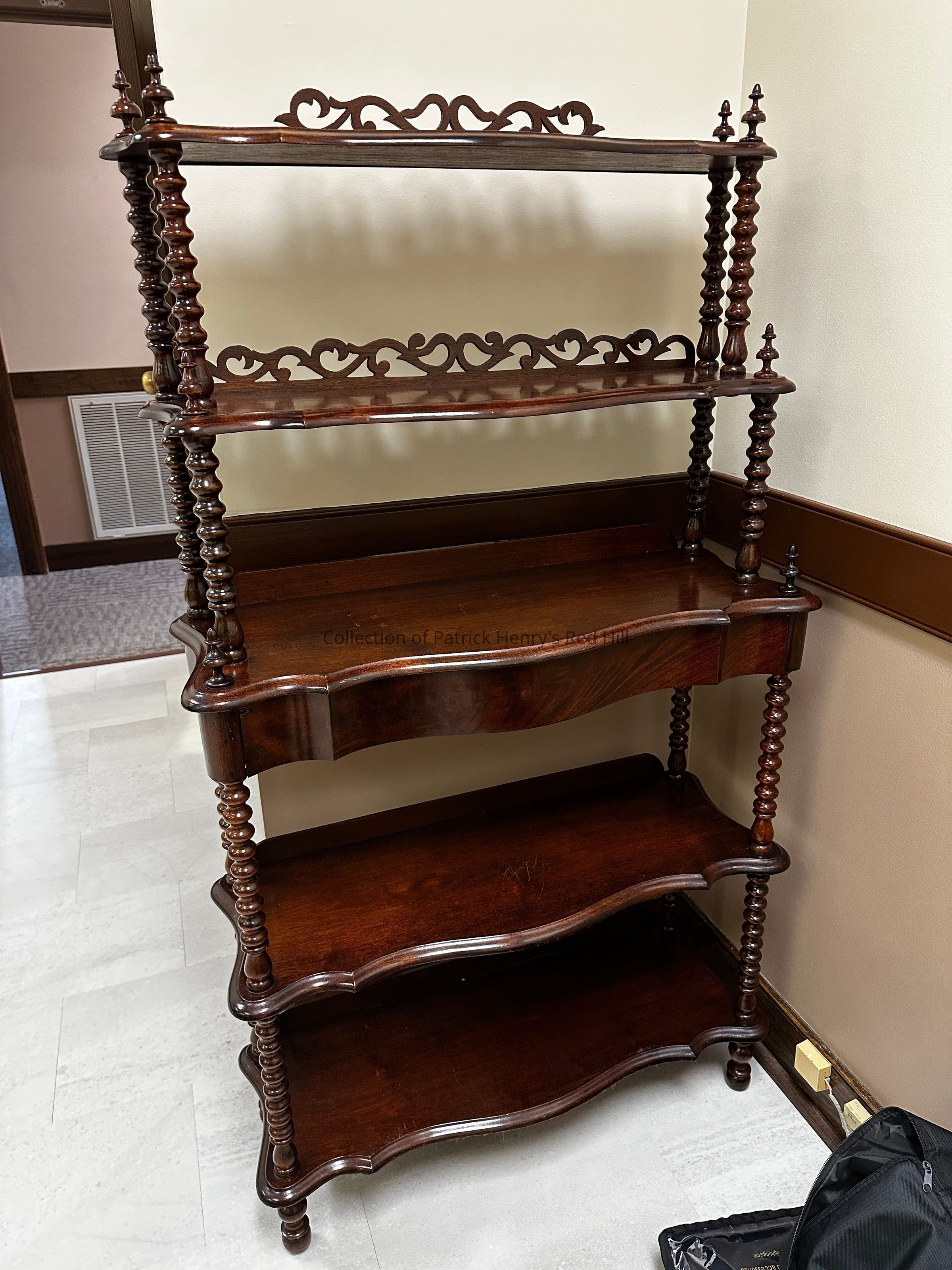Notes
The étagère, also called a whatnot, became a popular form of furniture in the 19th century. Étagères were typically made of mahogany, rosewood, or walnut and consisted of slender uprights or pillars that supported a series of shelves for holding a variety of objects. Étagères were often displayed in the parlor of middle- and high-class homes, reflecting wealth and showcasing mementos of family trips, photos, decorative objects, or reading materials.
This piece is sometimes referred to as a “waterfall whatnot” due to the size and shape of its tiered shelving. The decorative motifs date to the Rococo Revival style in America from around 1845 to 1870. According to family tradition, this étagère belonged to John Henry (1796–1868) and his wife, Elvira McClelland Henry (1808–1875), at Red Hill.
It was gifted to the Patrick Henry Memorial Foundation on October 23, 2024, by Jane Gammon Shore (1942–living), a descendant of Patrick Henry, through his youngest son, John Henry. She descends through John’s daughter, Margaret Ann Henry Miller (1827–1881), through Margaret’s daughter, Rose Cabell Miller Gammon (1868–1954), and finally to Rose’s son, Dr. William Miller Gammon (1900–1970). Jane Gammon Shore is the daughter of Dr. William Miller Gammon.
